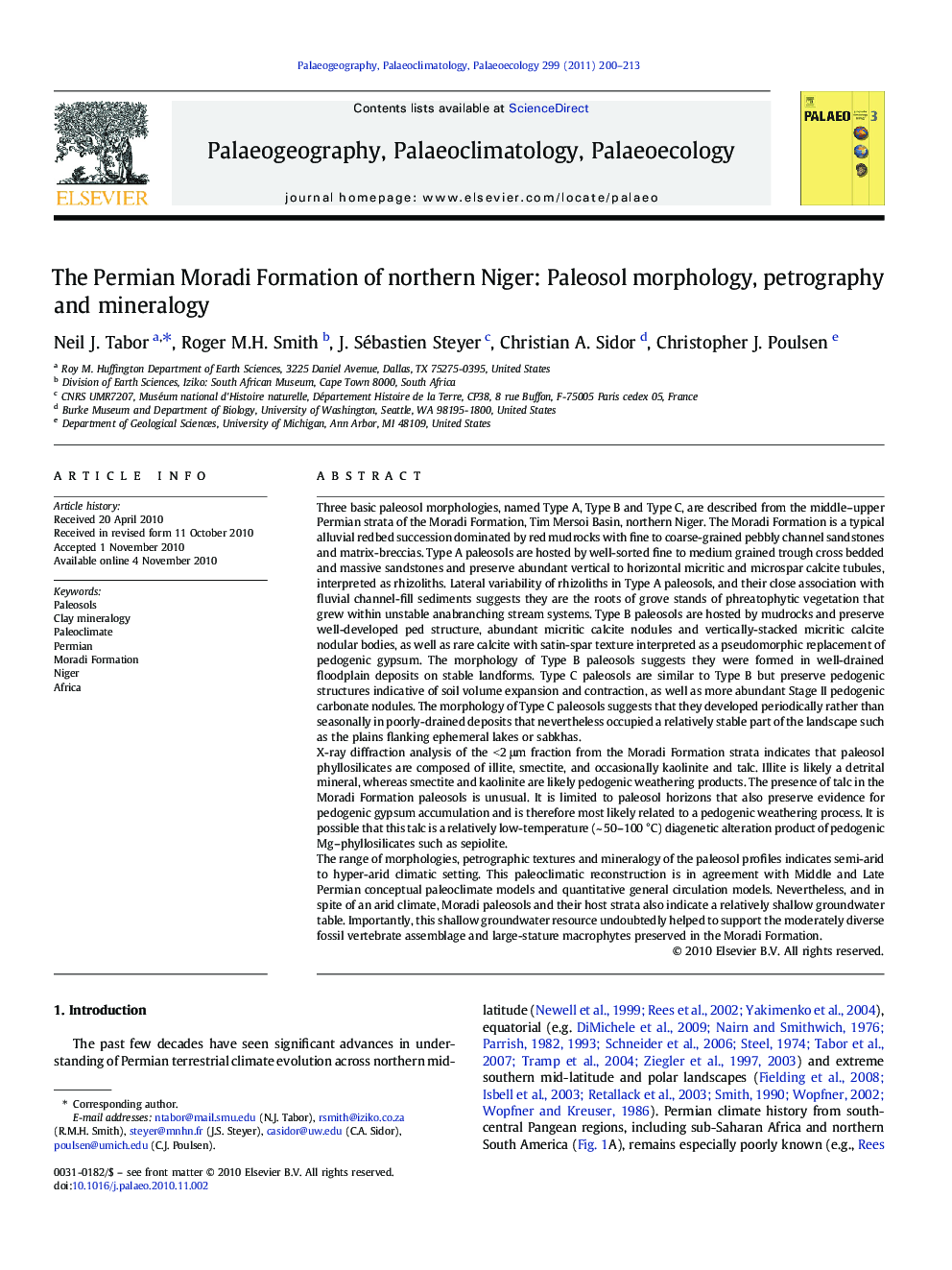| Article ID | Journal | Published Year | Pages | File Type |
|---|---|---|---|---|
| 6350685 | Palaeogeography, Palaeoclimatology, Palaeoecology | 2011 | 14 Pages |
Abstract
The range of morphologies, petrographic textures and mineralogy of the paleosol profiles indicates semi-arid to hyper-arid climatic setting. This paleoclimatic reconstruction is in agreement with Middle and Late Permian conceptual paleoclimate models and quantitative general circulation models. Nevertheless, and in spite of an arid climate, Moradi paleosols and their host strata also indicate a relatively shallow groundwater table. Importantly, this shallow groundwater resource undoubtedly helped to support the moderately diverse fossil vertebrate assemblage and large-stature macrophytes preserved in the Moradi Formation.
Related Topics
Physical Sciences and Engineering
Earth and Planetary Sciences
Earth-Surface Processes
Authors
Neil J. Tabor, Roger M.H. Smith, J. Sébastien Steyer, Christian A. Sidor, Christopher J. Poulsen,
